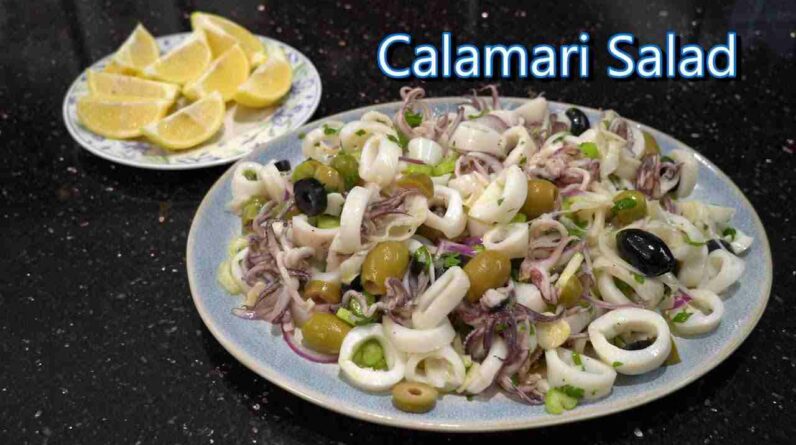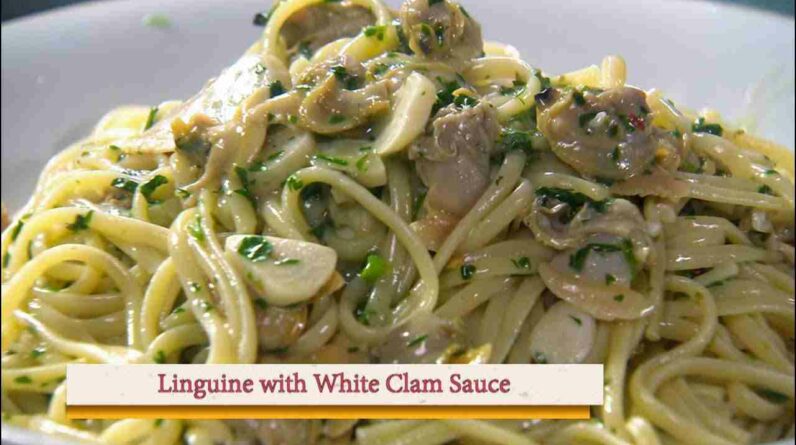In the culinary world, marinara and pomodoro sauce are often confused and used interchangeably, but there are distinct differences between these two beloved Italian sauces. While both are tomato-based and full of flavor, marinara sauce is a quick-cooking sauce that often includes additional ingredients like onions, garlic, and herbs, making it a versatile choice for a variety of dishes. On the other hand, pomodoro sauce is a simpler, more traditional sauce that focuses solely on the pure essence of tomatoes, allowing their natural sweetness to shine. So, whether you’re sautéing onions or simply letting the tomatoes do all the talking, understanding the nuances between these two sauces can elevate your culinary prowess and enhance your dining experiences.

Ingredients
Marinara Sauce
Marinara sauce is a classic Italian tomato sauce made with simple and fresh ingredients. It typically includes tomatoes, garlic, onions, olive oil, herbs (such as basil and oregano), and sometimes a hint of red pepper flakes for a subtle kick. The ingredients are combined to create a flavorful and versatile sauce that can be used in various dishes.
Pomodoro Sauce
Pomodoro sauce, which translates to “tomato” in Italian, is another tomato-based sauce that is known for its simplicity and freshness. Like marinara sauce, it is made with tomatoes, garlic, olive oil, and herbs. However, unlike marinara sauce, pomodoro sauce usually does not include onions or red pepper flakes. This minimalist approach allows the natural sweetness of the tomatoes to shine through in the sauce.
Origin
Marinara Sauce
Marinara sauce originates from southern Italy, specifically Naples. The word “marinara” actually means “mariner’s” in Italian, indicating its association with the sea. It is believed that the sauce was initially created by sailors who would make it using readily available ingredients like tomatoes, garlic, and herbs while they were at sea. Marinara sauce then made its way into Italian kitchens and became a staple in Italian cuisine.
Pomodoro Sauce
Pomodoro sauce also has its origins in Italy, but its specific origin is a bit less clear. It is widely believed to have originated in the northern regions of Italy, such as Emilia-Romagna and Tuscany. Pomodoro sauce is often associated with Tuscan cooking, where it is used in dishes like pasta al pomodoro. Its simplicity and focus on fresh tomatoes make it a favorite in Italian households.

Preparation
Marinara Sauce
To prepare marinara sauce, begin by sautéing minced garlic in olive oil until fragrant. Then, add finely chopped onions and cook until they become translucent. Next, add crushed or diced tomatoes to the pot, along with herbs like basil and oregano. Allow the sauce to simmer for about 20-30 minutes to allow the flavors to meld together. Finally, season with salt and pepper to taste.
Pomodoro Sauce
Preparing pomodoro sauce starts similarly to marinara sauce. Begin by sautéing minced garlic in olive oil until fragrant. Instead of adding onions, in pomodoro sauce, the focus is solely on fresh tomatoes. Add diced or crushed fresh tomatoes to the pot and simmer until they break down, releasing their natural juices. The sauce should cook for approximately 30-40 minutes to allow the flavors to develop. Finish by seasoning with salt and pepper.
Cooking Time
Marinara Sauce
Marinara sauce typically takes around 20-30 minutes to cook. This shorter cooking time helps to retain the vibrant flavors of the fresh ingredients used in the sauce. The relatively quick cooking process makes marinara sauce a go-to option for a quick weeknight meal or when time is limited.
Pomodoro Sauce
Pomodoro sauce generally requires a slightly longer cooking time than marinara sauce. The fresh tomatoes used in the sauce need more time to break down and release their juices, resulting in a thicker and more concentrated sauce. Pomodoro sauce typically takes around 30-40 minutes to cook, allowing for the perfect balance of flavors to develop.

Flavor Profile
Marinara Sauce
Marinara sauce boasts a bright, tangy, and fresh flavor profile. The combination of ripe tomatoes, fragrant garlic, and aromatic herbs creates a sauce that is bursting with natural sweetness and savory undertones. The addition of red pepper flakes adds a subtle heat, enhancing the overall flavor and providing a hint of spiciness.
Pomodoro Sauce
Pomodoro sauce showcases the natural sweetness of fresh tomatoes. It has a rich and intense tomato flavor with a subtle hint of garlic and olive oil. Without the added ingredients like onions or red pepper flakes, pomodoro sauce allows the natural flavors of the tomatoes to shine in a pure and unadulterated form.
Consistency
Marinara Sauce
Marinara sauce tends to have a relatively smooth and slightly chunky consistency. The tomatoes are usually crushed or diced, resulting in some texture in the sauce. However, it is generally not as thick as some other tomato sauces since it does not require an extended cooking time.
Pomodoro Sauce
Pomodoro sauce is typically smoother and thicker in consistency compared to marinara sauce. The longer cooking time allows the tomatoes to break down further, resulting in a sauce with a velvety texture. The absence of onions and additional vegetables also contributes to the smoother consistency of pomodoro sauce.

Pairing
Marinara Sauce
Marinara sauce is incredibly versatile and pairs well with a variety of dishes. It is commonly used as a base for pasta dishes, such as spaghetti and meatballs or lasagna. Additionally, it can be used as a dipping sauce for breadsticks or as a topping for meatball subs or pizza. Its tangy and savory flavors complement a wide range of ingredients and cuisines.
Pomodoro Sauce
Pomodoro sauce is also a versatile sauce that goes well with various dishes. Its rich tomato flavor makes it an ideal choice for pasta dishes like fettuccine pomodoro or linguine with fresh vegetables. It can also be used as a base for creamy tomato soup or as a topping for grilled chicken or fish. The simplicity of pomodoro sauce allows it to enhance and highlight the flavors of the accompanying ingredients.
Serving Suggestions
Marinara Sauce
When serving marinara sauce, consider pairing it with a generous portion of al dente pasta for a classic and comforting meal. Sprinkle some freshly grated Parmesan cheese on top and garnish with a sprinkle of fresh basil or parsley for added freshness. Marinara sauce also pairs well with Italian classics like chicken Parmesan, eggplant Parmesan, or stuffed shells.
Pomodoro Sauce
For pomodoro sauce enthusiasts, serving a simple pasta dish is a great option. Gently toss the cooked pasta with the sauce, ensuring each strand is coated evenly. Freshly grated pecorino or Parmesan cheese can be added on top, along with a sprinkle of chopped fresh basil. To complement the sauce’s simplicity, serve with a side of crusty bread and a fresh green salad.

Popular Recipes
Marinara Sauce
One popular marinara sauce recipe involves sautéing minced garlic and onions in olive oil until fragrant and translucent. Crushed tomatoes, fresh basil, oregano, and a pinch of red pepper flakes are added to the pot. The sauce is then simmered for around 20 minutes before being seasoned with salt and pepper. This simple and flavorful marinara sauce is perfect for a quick spaghetti dinner.
Pomodoro Sauce
A popular pomodoro sauce recipe starts with sautéing garlic in olive oil until golden. Fresh tomatoes are then added, along with a generous pinch of salt and pepper. The sauce is simmered until the tomatoes break down, and their juices thicken. Some recipes may add a bit of sugar to balance the acidity of the tomatoes. The result is a vibrant and delicious pomodoro sauce that showcases the natural flavors of the tomatoes.
Variations
Marinara Sauce
While the basic recipe for marinara sauce remains relatively consistent, there are various ways to experiment and personalize it. For added depth of flavor, some recipes call for the addition of red wine or a splash of balsamic vinegar. Others may incorporate additional vegetables like bell peppers or carrots for added sweetness. Adding a variety of herbs, such as thyme or parsley, can also enhance the overall taste of the sauce.
Pomodoro Sauce
Similar to marinara sauce, pomodoro sauce allows for creativity and experimentation. Some variations may include a touch of white wine or tomato paste for richness. Others may incorporate cooked pancetta or bacon to add a savory and smoky note to the sauce. Fresh herbs like rosemary or thyme can also be added to give the sauce a unique twist.
In conclusion, while marinara and pomodoro sauce share similarities, they also have subtle differences that set them apart. Marinara sauce tends to be lighter and slightly chunky, perfect for quick and versatile dishes. On the other hand, pomodoro sauce takes a bit longer to cook and has a smoother consistency, allowing the natural flavors of tomatoes to shine through. Whether you prefer the tangy freshness of marinara or the pure simplicity of pomodoro, both sauces are incredibly delicious and have their own special place in Italian cuisine.










